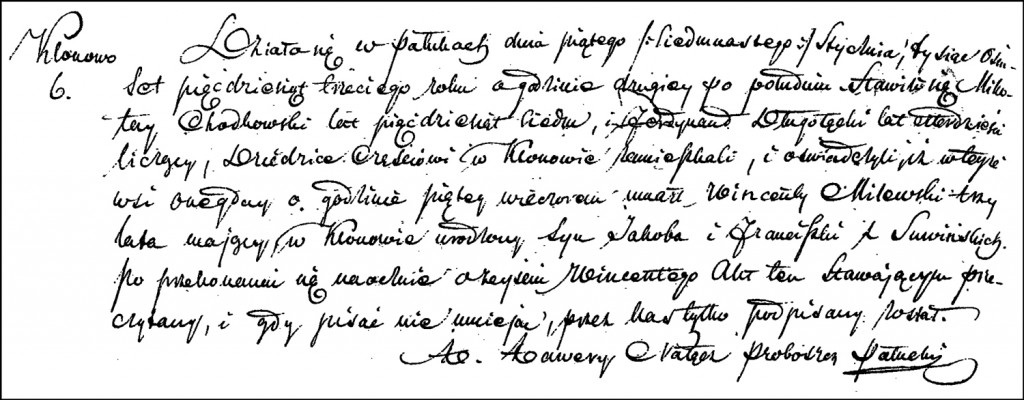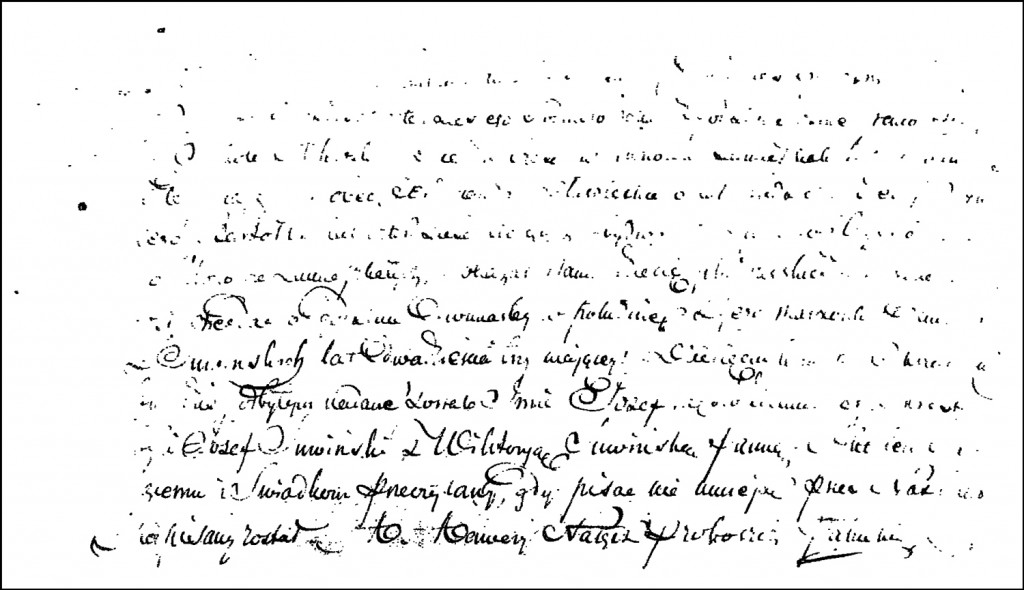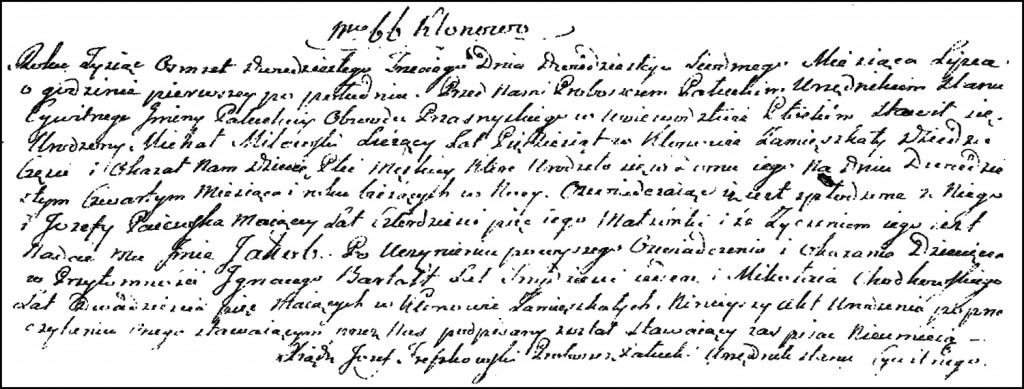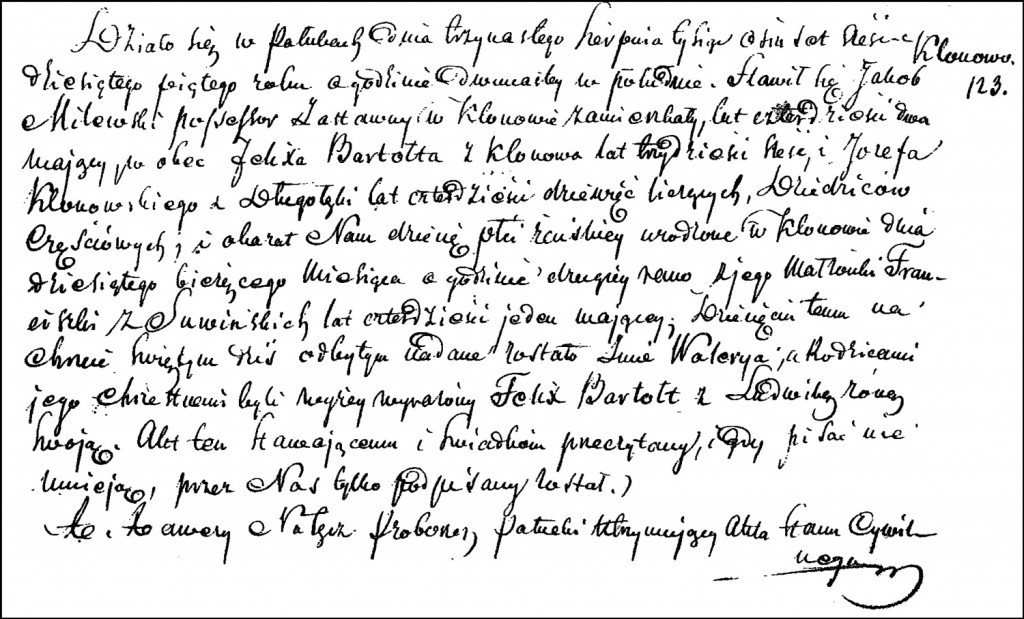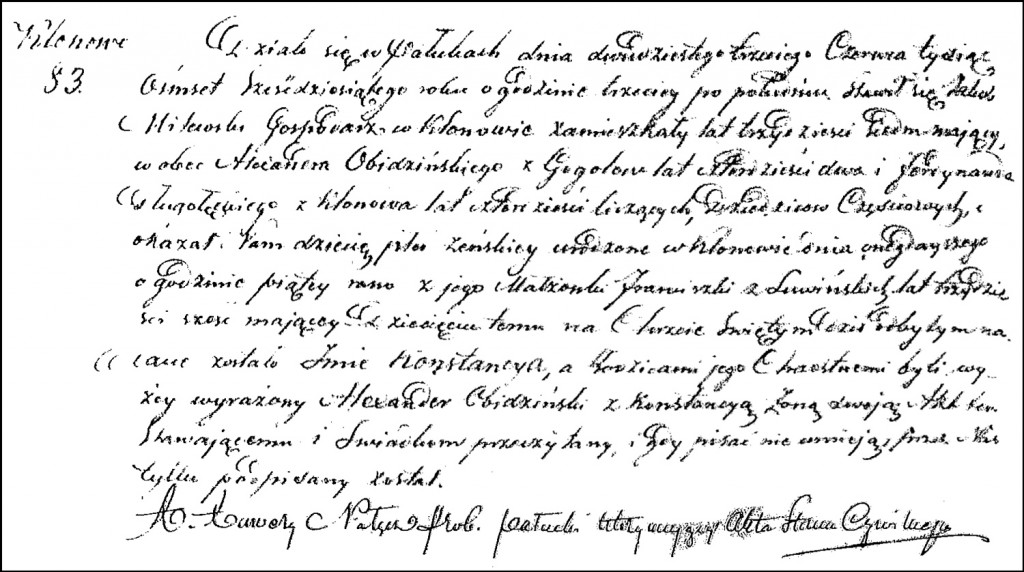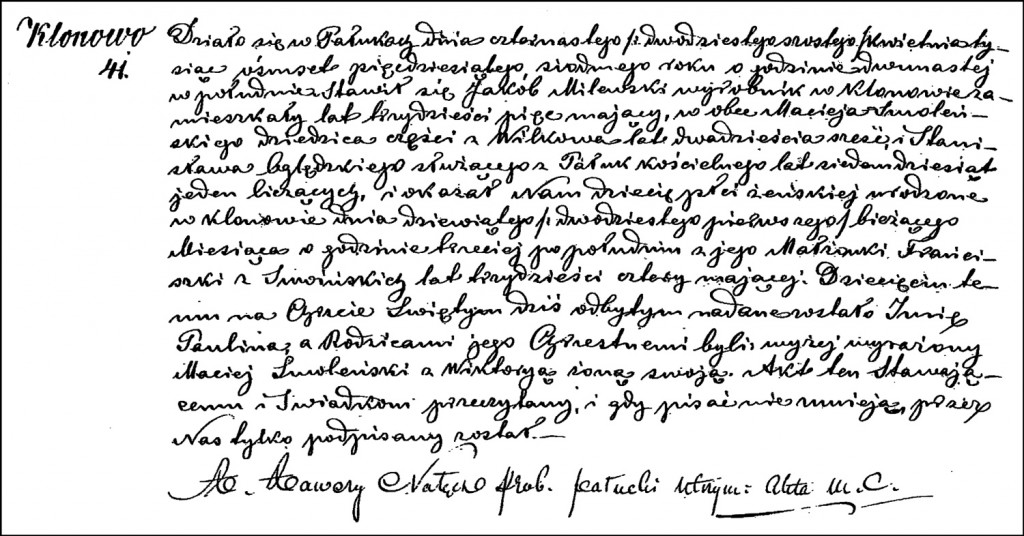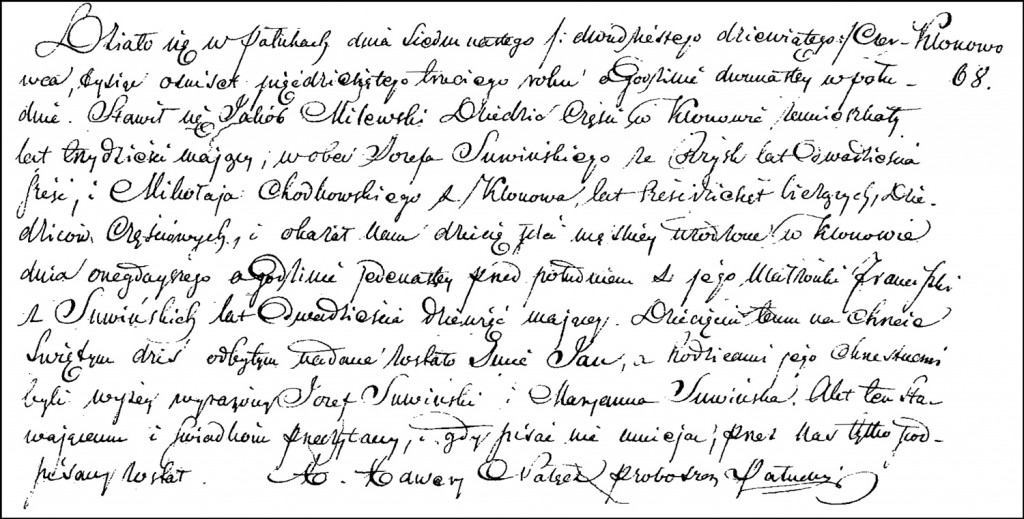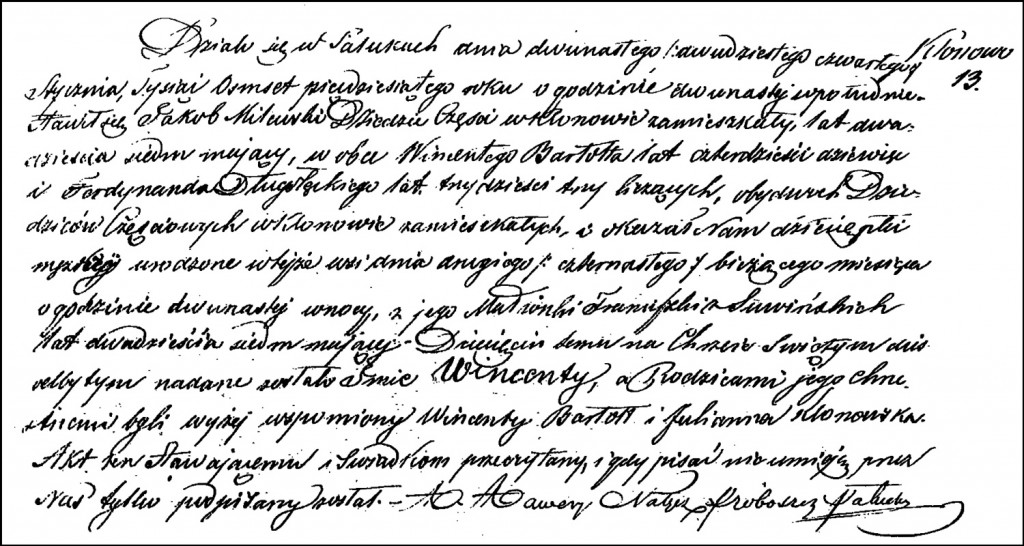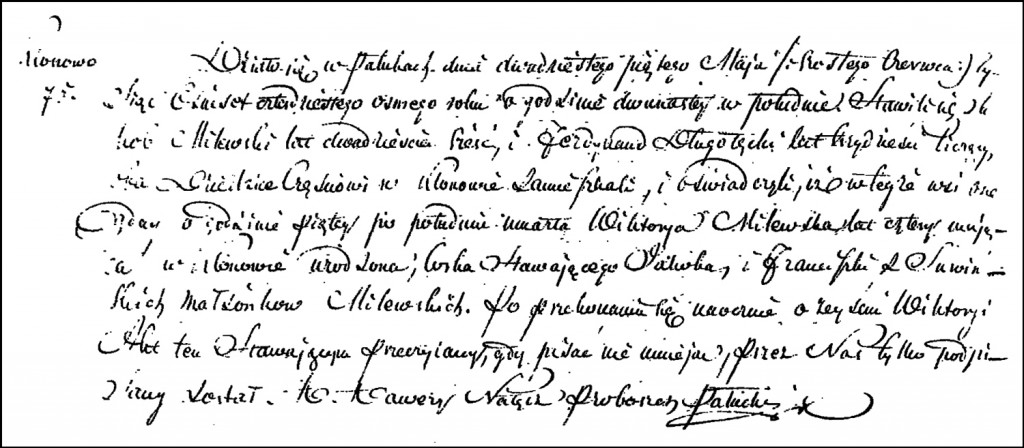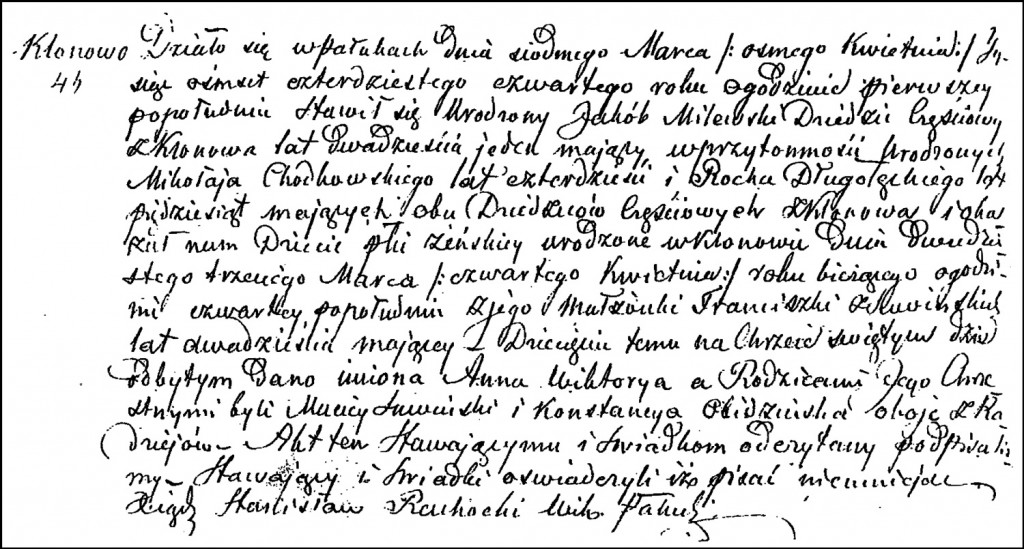Wincenty Milewski, son of Jakub Milewska and Franciszka Suwińska, died on 15 January 1853 in Klonowo, Ciechanów Powiat, Płock Gubernia, Congress Kingdom of Poland. He was buried at the parish church in Pałuki, Ciechanów Powiat, Płock Gubernia, Congress Kingdom of Poland on 17 January 1853.
The Death and Burial Record of Wincenty Milewski – 1853
SOURCE: Parafia pw. św. Gotarda (Pałuki, Ciechanów Powiat, Płock Gubernia, Congress Kingdom of Poland), “Akta urodzeń, małżeństw, zgonów 1852-1860 [Records of Births, Marriages, and Deaths 1852-1860],” folio 40 verso, entry 6, Wincenty Milewski, 17 Jan 1853; filmed as Kopie księg metrykalnych, 1808-1892; FHL INTL microfilm 0,702,612.
Click on the image above to view a higher resolution image. Click on the link for a PDF copy of the Death and Burial Record of Wincenty Milewski. Translated from the Polish, the record reads:
Klonowo 6
    This happened in Pałuki on the fifth / seventeenth day of January in the year one-thousand eight-hundred fifty-three at the hour of two in the afternoon . There appeared Mikołaj Chodkowski, fifty-seven years of age, and Ferdynand Długołęcki, forty years of age, owners of parts [of the village] and residing in Klonowo, and they stated that in this village on the day before yesterday at the hour of five in the evening, Wincenty Milewski died, three years old, born in Klonowo son of Jakub and Franciszka née Suwińska . After visual confirmation of the death of Wincenty, this document was read aloud to the declarants and because they do not know how to write, was signed by Us alone.
 [signed] The Reverend Ksawery Nałęcz, Pastor of Pałuki
Wincenty Milewski was the nephew of the husband of my 2nd cousin 4X removed, Marianna Chodkowska.
Copyright © 2010 by Stephen J. Danko

